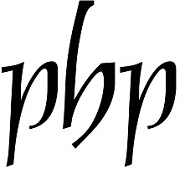9781911300731
Distributed for Paul Holberton Publishing
Legacy of the Masters
Painting and Calligraphy from the Islamic World
A stunning collection, accumulated over many years, of paintings, drawings and calligraphy of the highest quality mostly created for albums from the Safavid, Uzbek, Ottoman and Mughal Empires from the 16th to early 19th century. Lavishly illustrated, this unusually exquisite and scholarly book is a noteworthy addition to its field. This publication presents a collection of over sixty paintings, drawings and calligraphic specimens mostly made in the Safavid, Uzbek, Ottoman and Mughal Empires in the period from the 16th through the early 19th century for inclusion in albums (muraqqa‘). The compilation of these albums, involving the collection and ordering of the works to be included as well as the design and execution of decorative borders, was an art form in itself and amounted to a broader cultural phenomenon that has increasingly become the focus of scholarly attention. This was the age of the master artist, whose work was eagerly sought by collectors, imitated by admirers and forgers, taken as loot by invaders, and exchanged as gifts that had value across political borders. The international currency of a master artist’s work is particularly apparent in the case of the calligrapher Mir ‘Ali of Herat (d. 1544), whose calligraphies were almost obsessively sought out by the Mughal rulers of India and provided a model for subsequent generations of calligraphers in India and Iran. In Iran, Shah ‘Abbas’ new capital of Isfahan was the breeding ground for a generation of artists specialized in single-page calligraphic compositions, paintings and drawings, often working in distinctive styles. These included calligraphers such as Mir ‘Imad al-Hasani and ‘Ali Riza ‘Abbasi, and painters like Riza ‘Abbasi, Muhammad Qasim and, later, Mu’in Musavvir. The processes of collection and compilation were complex, as albums were gifted and reassembled to suit the tastes and outlook of new owners. An eloquent example of this ongoing evolution is the famous St. Petersburg Album. Compiled and given decorative borders in Iran in the mid-18th century, the album contains a number of Mughal and Deccani paintings and drawings presumed to have been taken to Iran as plunder by Nadir Shah following the invasion of India in 1739. The end of this tradition is marked in the publication by a number of works from Mughal-style albums of calligraphy and painting acquired by officers and administrators of the British East India Company such as Warren Hastings and William Fraser.

